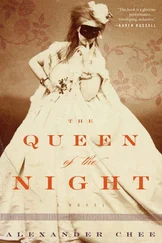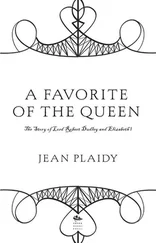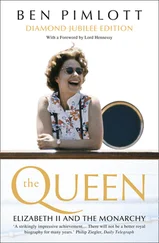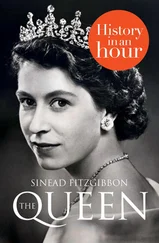As Crawfie observed, life in the Palace brought down “a glass curtain between you and the outer world.” Buckingham Palace is an overwhelming place, with 775 rooms, more the head office of the monarchy than a home. Lilibet spent many hours gazing out the windows watching the world pass below her, wondering about the lives of the “real people.”
To expand her horizons beyond the family, and to diminish the sense of isolation, Crawfie organized a troop of Girl Guides (the equivalent of American Girl Scouts) at the Palace. The original group of twenty included relatives such as Patricia Mountbatten, the “quite fierce” (in Lilibet’s view) leader of the Kingfisher patrol to whom the heiress presumptive actually had to defer, and aristocratic friends such as Lady Camilla “Micky” Wallop (daughter of the 9th Earl of Portsmouth), as well as daughters of chauffeurs and other Palace employees.
Using either a designated room in the Palace or the summerhouse in the forty-acre garden as the headquarters, the girls built campfires, watched birds, and played team games. The future Queen was rough-and-ready. She “was brought up knowing she mustn’t cry in public, which becomes a way of life,” Patricia Mountbatten recalled. “As a child she was told, ‘If you fall down, you don’t make a face.’ ”
DIGNITARIES WHO VISITED the King and Queen were introduced to the princesses, who were expected to make intelligent conversation with them during dinner. Elizabeth was as interested in people as her mother, but she lacked Queen Elizabeth’s spontaneous enjoyment of others. Queen Elizabeth helped Lilibet overcome her diffidence by role-playing exercises in which she would pretend to be the Archbishop of Canterbury or another distinguished guest. The Queen drilled in her own mother’s maxim that “if you find something or somebody a bore, the fault lies in you.” She also taught her daughters how to withstand the stares of three thousand people during garden parties at Buckingham Palace, and how to walk at a measured pace. As Lilibet lectured her sister, “You must not be in too much of a hurry to get through the crowds to the tea table. That’s not polite.”
Through her chatty and descriptive letters while she and the King were on tour overseas, Queen Elizabeth introduced her daughter to the wider world and the exacting demands of royal service. When their parents traveled to Canada and the United States in June 1939, Lilibet and Margaret Rose kept track of their progress on maps displayed in their schoolroom. Their mother wrote that Americans were “particularly easy and pleasant … and delighted to find that we were ordinary & fairly polite people with a big job of work.” She revealed that “sometimes I have tears in my eyes when one sees the emotion in their faces” but also confessed to the strain of being “almost continually ‘on show’ … there comes a moment when one’s resistance nearly goes.”
With her mother’s guidance, Lilibet also developed a deeply held Christian faith. Queen Elizabeth read Bible stories and instructed her daughter in the collects and psalms from the Book of Common Prayer. “The Queen knows the prayer book backwards,” said George Carey, the 103rd Archbishop of Canterbury and later Lord Carey of Clifton. Queen Elizabeth showed her devotion by kneeling to pray each night, a practice her daughter was said to continue. “She comes from a generation in which kneeling by the side of the bed is quite natural,” said Carey. “Attitude helps you to pray, and if you are on your knees it creates a mood of submission before the Almighty.”
Queen Elizabeth also instructed her daughter in practical matters. Clarissa Eden, the widow of Sir Anthony Eden (the 1st Earl of Avon), Elizabeth II’s second prime minister, marveled that the Queen would “sit up at a slight distance from the chair back. She can sit like that for hours.” This habit she learned early from her mother, who firmly believed “a lady’s back should never touch the back of her chair.”
As a little girl, Lilibet had a hot temper—a family trait shared not only by her father, but George V and Edward VII—that her mother’s soothing personality tamed through example and exhortation. Queen Elizabeth’s mother, the Countess of Strathmore, “brought up her children and they brought up their children to be in control of their temper and moods, and to never allow their moods to dominate,” said Mary Clayton. Queen Elizabeth’s enlightened tenets for parenting were grounded in encouragement and understanding: avoid ridicule, discourage showing off, speak quietly, and “never shout or frighten” or “you lose their delightful trust in you.” As she wrote in one letter to Lilibet, “remember to keep your temper & your word & be loving.”
With her 150 dolls and lineup of thirty foot-high toy horses saddled and bridled for play, her every creature comfort cared for, and her meals served by footmen in scarlet livery, how did Elizabeth avoid being spoiled and arrogant? “She was brought up by strict nannies,” explained a friend from the age of five. “I remember once when Princess Elizabeth and Princess Margaret came to tea, and Princess Elizabeth put her elbows on the table. Mrs. Knight said, ‘Take them off.’ I didn’t expect a princess would have to be told, but she was brought up properly, as a nanny would bring you up, and the Queen has never broken the rules.”
Clara “Allah” Knight was the family’s Hertfordshire-born nursery nanny, who along with Lilibet’s Scottish nursemaid, Margaret “Bobo” MacDonald, regulated the quotidian details of life outside the classroom, and spent far more time with the two princesses than did their parents. Bobo—described by valet John Dean as “small, very smart, and rather peremptory”—would remain in the Queen’s service until her death in 1993. “The Queen just enjoyed talking to a sensible Scottish countrywoman,” said Mary Clayton.
To encourage tidiness and frugality, Allah and Bobo taught Lilibet to keep her belongings in neat rows, to save wrapping paper and ribbon in fastidiously folded parcels and carefully wound rolls, and to turn off unneeded lights. The princess received a weekly allowance of 5 shillings, a useful if artificial discipline, since her annual income was £6,000 a year. When she undressed, she obediently folded her clothes and placed them under a lace and net “clothes tidy,” never leaving anything on the floor or thrown over a chair. Allah and Bobo also helped stop her nail biting, although they didn’t entirely extinguish what Helen Mirren called Elizabeth’s “internal fast beat” behind her tranquil demeanor: a tendency in adulthood to fidget with her engagement and wedding rings.
The other crucial enforcer in Elizabeth’s life was her paternal grandmother, Queen Mary, the consort of King George V. She was a stiff and formal figure who wore a tiara every night at dinner, even when she and the King were dining alone. She was unable to “look anyone straight in the face,” noted photographer Cecil Beaton. “Queen Mary wore tiaras like she wore her toques,” observed Deborah Mitford, the Duchess of Devonshire, “as if they were part of her being.” Her manner was thoroughly proper, her dedication to duty absolute. Not long before she died at age eighty-five, Queen Mary touchingly said she wished that just once she had climbed over a fence.
A stickler for protocol, Queen Mary insisted Lilibet and Margaret Rose curtsy to her whenever they met. She rigorously suppressed her emotions—exhibiting, at most, a slight shift of her lips to indicate amusement—and impressed on Lilibet that it was inappropriate for a monarch to smile in public. When Lilibet spoke of “all the people who’ll be waiting to see us outside” a concert, her grandmother punished her self-important remark by taking her home immediately. Lilibet absorbed even the difficult lessons readily, in part because she and her grandmother were similarly self-contained, focused, and industrious. In the years to come she would frequently quote her stern grandmother.
Читать дальше












